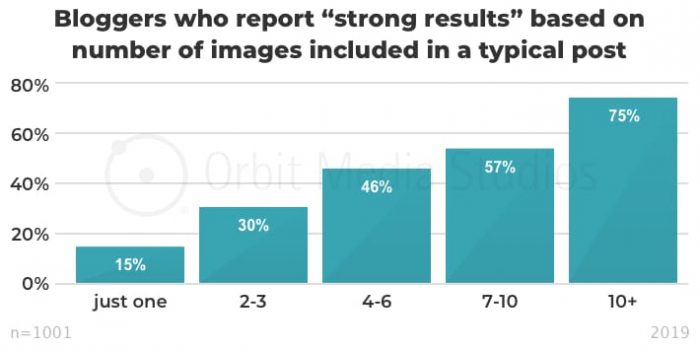
There are many compelling reasons to create a blog for your business.
We recently listed seven of them in this article, including driving traffic to your website, growing your reputation, and what you might call “impressing Google”.
But the act of blogging itself is not enough to get results. There’s a lot more to it than “build it, and they will come”. You need your blog to be effective.
Here are 18 secrets to effective blogging in 2020 every blogger, marketer, writer and business owner should know.
Know the answers to a few important questions about your audience before you start writing.
Once you know clearly whom your audience is and what they want, it becomes much easier to cater for them.
Actually, there’s a huge body of work to do before you launch a new blog. There are a few important considerations listed on this blog post over here.
A bit like writing an essay the night before you had to hand it in to the teacher, a rushed blog post will never be your best work. Even if you feel, psychologically, you “need a deadline” to get the actual writing done, give yourself time to do it properly.

Orbit Media’s excellent Annual Blogging Survey 2019, released in October, showed the average time taken to write a blog post is nearly four hours. That’s up from less than two and a half hours in 2014.
Yet even that is perhaps too short a time frame. The report found 38 per cent of the bloggers who spend more than six hours on each article reported “strong results” from blogging.
Both your audience and Google are looking for quality information. (The days of writing any old garbage and posting it to drive traffic to your website are, thankfully, long gone.)
When you start writing, know exactly what you want your reader to take away from the article. Before you start writing, have a list of three to six (or 18) amazing insights or pieces of advice you want to share.
Publishing anything other than quality is a risk to your reputation.
Sometimes, when I was a newspaper journalist, I’d ask the chief of staff or editor how long they’d like an article to be and instead of giving me a word count they’d say, “write it for what it’s worth”.
It’s a shorthand expression for “don’t cut it short if the reader is going to find it fascinating, but don’t pad it out either”.

You’ll find a lot of advice online about ideal blog post length. Supposedly Google prefers posts that are between 1000 and 2000 words. That’s great, but is that what your audience wants? Or is it what the information you’re sharing needs? Perhaps not.
According to the Annual Blogging Survey, the average length for a post is now 1236 words. It’s good to know, but just write it for what it’s worth.
READ MORE: Why every business should focus on writing effectiveness
There’s an old rule in journalism that you write so a 12-year-old can understand it. If your audience are members of the general public, that’s good advice. If your audience are professional or technical people, alter your language to suit them.
Generally, don’t use gobbledegook and jargon.
If your content doesn’t flow logically, readers get lost and confused and will probably leave your website, never to return. Think about the structure of your blog post before you start writing. Focus on how one idea flows to the next.
If the ideas are related but you can’t see a flow, think about structures like this blog post, which break up the bits of advice with headings.
Give your audience (and potential audience) a reason to actively seek you out. What’s the single best way to do that? Here’s Michele Linn from Mantis Research:
“Want to really up the effectiveness of your blog in terms of traffic and backlinks? Create our own original research. Become the source of data for something that hasn’t yet been covered,” she says.
Original research is an investment but it’ll provide you with an entire year’s worth of content ideas, and you can use your findings to get media coverage.

See what I did in that last piece of advice? Instead of giving you my opinion, I got some insights from an expert in the field. Gives it a lot more weight, huh?
Include quotes from expert sources in your blog posts. Not only does this ensure your readers are getting the best advice, but also it associates your brand with a respected reputation and that person is more likely to share your blog post – potentially introducing you to a whole new audience.
Typeset recently commissioned some original research into writing effectiveness that will be coming out soon. I was horrified to discover that only 46 per cent of people were always fact checking their content before they posted it. (32 per cent were doing it sometimes, rarely, or not at all.)
Don’t risk brand damage by misleading your audience (accidentally or otherwise): fact check your articles before you post them!
Don’t just use one image with your blog post. Orbit Media’s Annual Blogging Survey found the most effective blog posts often had 10 or more photos. Here’s a chart from the report:

Images are also a great way to break up long pieces of text (to keep the reader interested).
A little search engine optimisation, or SEO, research will help identify the keywords you need to include in your blog posts to give them the best possible chance of appearing in someone’s Google search results.
According to the Annual Blogging Survey, the most effective bloggers actually research new keywords for every single article they write.
Some headlines are more effective than others. It can really have an impact on the success of your content. Fortunately, there are free online tools available to help you test your headlines. Find out more here.

There’s a lot of great content on the internet that no-one ever finds. Make it easier for Google (and, therefore, your audience) to find you by filling in all the back-end information Google uses to filter its searches:
Work with an editor and a proofreader to ensure your content is absolutely word perfect. Nothing does brand damage quite like a blog post filled with spelling mistakes, grammatical errors, and shoddy formatting.
If you’re writing your own blog posts, getting a professional editor – or at the very least a proofreader – to look over it is probably the best investment you can make.
READ MORE: 5 simple proofreading tips to save your business from embarrassment
As audiences we’ve been conditioned to expect content at a regular time. The newspaper lands on the lawn each morning. The news bulletin is on the radio at the top of each hour. Our favourite TV show is on at 8.30 p.m. every Tuesday. Or whatever it might be.

Publishing to a regular calendar is not only what audiences expect, having that deadline can also help you with the discipline of writing. (And, at the very least, Google wants to see that you’re publishing consistently.)
Don’t just pop your blog up on your website and hope folks will find it. Share it to social media (although that’s becoming a less effective distribution channel for business), send it out to your email list, use it to answer questions on Quora – post it wherever you can to get under the noses of readers.
And don’t just do it once. Keep distributing it over time.
Use your content to create new opportunities for exposure, like media coverage, creating guest posts for popular blogs, and winning speaking engagements.
One of our clients has had a lot of success sending their opinion pieces and original research to major newspapers ahead of publication.
It works fantastically well. The newspaper gets a story and our client gets the exposure, then they post their own version of the content on their blog while impressing their existing audience with the fact they’ve been quoted in the mainstream media. It makes them look like industry-leading experts (which, to be fair, they are).

Don’t let a good piece of content die on the vine. Update it to keep it fresh and “evergreen”.
If you answer yes to any of these questions, get back in there and tinker with it. Then once it’s updated, you can distribute it again!
If you want help with your company’s blog, including writing, editing and proofreading services, get in touch. Our expert team would be happy to help.
